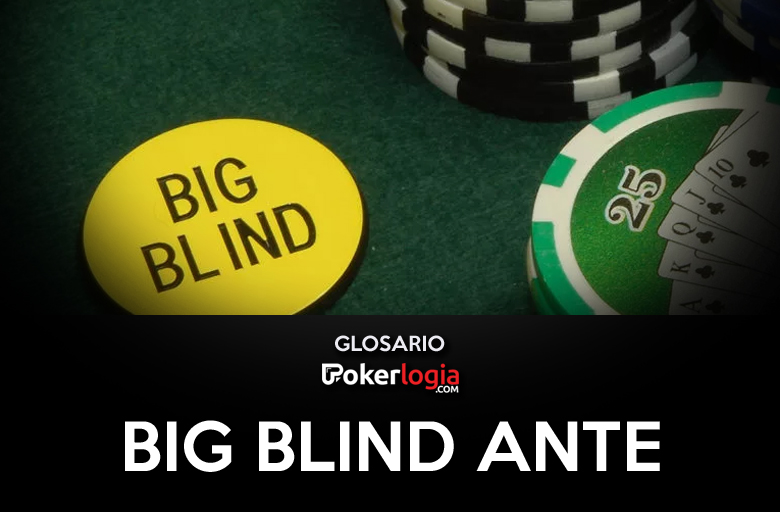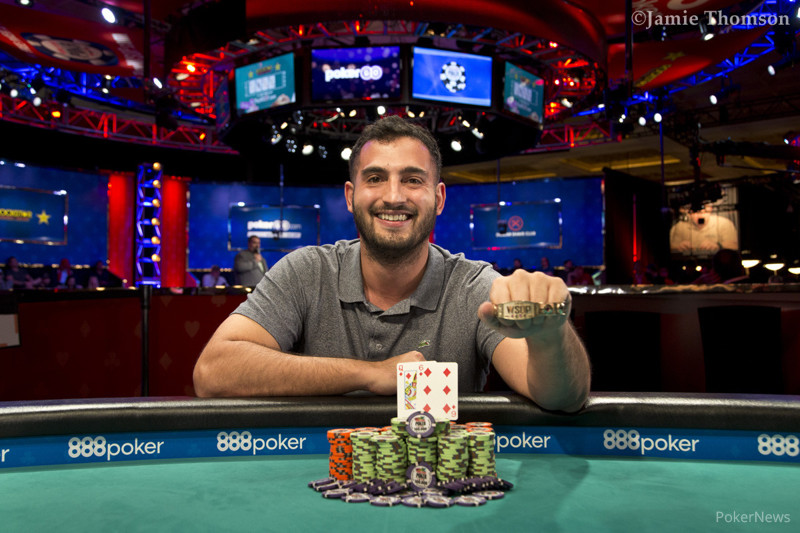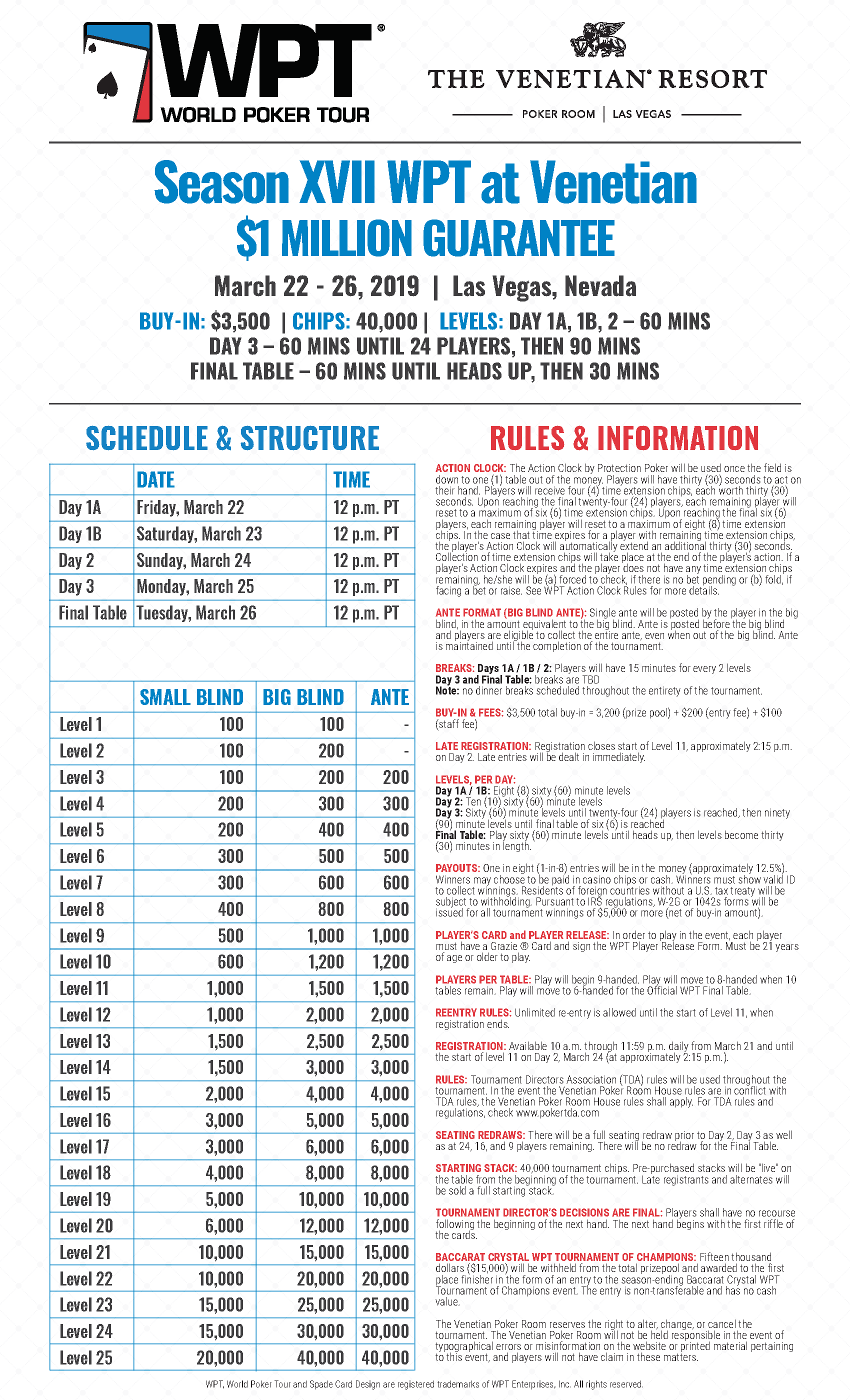Big Blind Ante Rules
In regards to payouts, if two players are all-in at same table and one is in the Big Blind, (a) the Big Blind gets credit for ante first, (b) the player out of the big blind gets full credit for ante, and (c) the ante is considered dead in the pot. Dealers, staff, and players alike have universally claimed how much easier and more efficient it is. Blinds can not be made up between the big blind and the button. A new player must wait until the button passes. See Explanations, discussion #3, for more information on this rule.
What is the Big Blind Ante?

Check out Matt Savage's recent article as he explains the benefits and rules of the new Big Blind Ante structure and why the World Poker Tour is adopting it.
All 79 rules with the latest poker rules, including the button ante, big blind ante and the shot clock. When new versions will be published within 6 months after you downloaded the International Poker Rules, you will receive this updated version for free! If there are less than the 6 or 7 players, typically, it is a SB instead. So let's say we're playing a level of 1,000/2,000 and antes are in play, with a full ante being 2,000. So when the players are putting in the SB and BB, the BB will actually be putting in 4,000 chips, as 2,000 is the ante.
So... what strategic adjustments should you be making because of the new BB Ante format?
The answer might surprise you....
Watch the below preview of LearnWPT Strategy Episode 237 as Nick Binger answers a Member submitted question from our Ask a Pro feature regarding adjustments for the new Big Blind Ante structure:
Some key take away's from Matt Savages' article regarding the new Big Blind Ante structure all players should know:
- There will be one single ante posted for the whole table by the player in the Big Blind.
- The ante is posted first and players from any position will be eligible to win the entire ante regardless of chip stack.
- Antes never reduce until end of tournament.
- In regards to payouts, if two players are all-in at same table and one is in the Big Blind, (a) the Big Blind gets credit for ante first, (b) the player out of the big blind gets full credit for ante, and (c) the ante is considered dead in the pot.
- Dealers, staff, and players alike have universally claimed how much easier and more efficient it is. Dealers do not have to remind distracted players to post their antes every hand.
- More hands are being dealt, allowing structures to remain deeper for longer portions of tournaments.
- There are less chips in play and less need to make change.

'The TDA and I share a mantra of consistency and, whether or not you personally agree, you should live with the change to be consistent for the benefit of the players. I know that big blind ante is a great change to no-limit hold’em poker tournaments. The big blind ante is here to stay! The bottom line is that BBA is faster and downright better!'
- Matt Savage
Members can send us any questions or hands they've played using the BBA and receive expert answers and analysis from the LearnWPT Instructors using the popular Ask a Pro feature and Hand Input Tool.
What do you think of the new Big Blind Ante?
Share your thoughts in the comments below!
We created LearnWPT with the goal to provide a place that empowers players to ask questions, help get them focused, and provide a solid game-plan to bring to the table every time they sit down.
Some of the ways we accomplish this is by:
- Teaching and presenting examples of proven, winning concepts through our Strategy Episodes (short 10-15 min videos)
- Having Members Practice, Drill, and Play Hands using the WPT GTO Trainer for instant feedback on their decisions
- Providing a place where Members can send questions to receive answers and guidance with the Ask a Pro feature
- Giving Members the ability to record and send hands they've played to receive expert analysis using the Hand Input Tool
Not a Member? Click below to join (just $5 your first month) and start improving your game today!
Nothing seems to confuse new Texas hold 'em players more than the blinds. Let's sort it out.
I used to play stud and draw poker with neighbors. I don't still play, but like to read about poker strategy. Would you please explain how the big blind and little blind work in hold 'em? I'm sure many of us who read LuckyDog have no idea. — Dale H., Kankakee, Ill.
Well, Dale, since I had the same question this month from John, a co-worker of mine in Moline, Ill., it's a good time to explain the blinds in hold 'em.
Think of the blinds as antes used to stimulate betting and initiate play. There's one key difference: Unlike stud and draw poker, in which every player must pay the same pre-determined ante before each deal, in hold 'em only the first two players to the left of the dealer position have to post a blind.
The dealer for each hand is designated by a round disk called a button. Except for the first betting round, the player with the dealer button gets to act last throughout the hand. On the first betting round, the two players in the blinds act after the button, then are first to act on remaining betting rounds.
The button moves clockwise one position for each new hand. That rotates the advantage of last action and assures that for every circuit of the button around the table, each player will pay the two blinds once. The little blind usually is half the amount of the big blind.
Here's an example:
You're in seat five of a nine-handed $4-$8 limit hold 'em cash game and the dealer button reaches seat three. That means you are in the big blind position and must put $4 in front of you before the cards are dealt. The player to your right in seat four must post the $2 small blind.
Big Blind Ante Tournament Strategy

Two down cards are then dealt to each player, starting with the small blind. On the first betting round, action starts with the player to your left in seat six, a position called 'under the gun,' meaning first to act.
From the big blind, you are last to act before the flop. If no one has raised (to $8 in this case) when the action gets back around to you, you have two options — you can check, since you're already in for the $4 bet, or you can raise to $8. Don't fold. Even a lousy 7-2 offsuit can turn into quads on a perfect flop!

If someone raises before the action gets back to you pre-flop, you have three options: fold and forfeit your $4; call the additional $4, or re-raise by betting $8 more for a total of $12.
After the flop, the betting rotation changes. The player in the small blind on your right acts first for the rest of the hand, then you. If he has folded, you're first to act each round until the hand ends.
On the next hand, the button moves to seat four. Now you're in the small blind position and must post $2 before the deal. To stay in the hand, you must match the bet amount when it's your turn ($2 more if no one raises). Or you can fold, losing your $2 small blind.
On the next hand, you get the dealer button and can see your starting hands for free until it's time to post the blinds again.
We'll tackle playing strategies from the blind positions in a future column, Dale and John, but for now here are some other things to know:
— Some card rooms play hold 'em with a 'dead' button. That means the big blind is posted by the seated player due for it, and the small blind and button are positioned accordingly, whether or not players actually are seated there to receive a hand. This gives last-action advantage to a player on consecutive hands.
— If you miss paying one or both blinds, you must post the appropriate amount when you return or sit out until the big blind position advances to you. If you post mid-circuit, you still must pay the blinds when they reach you a few hands later in that round.
— When joining a game in progress, some card rooms require that you post the big blind amount if you want to be dealt in right away. You can choose to sit out until the big blind position reaches you normally, which is a good option because you can watch a few hands risk-free and get a feel for the table's action.
Poker Ante And Blinds
— In heads-up play using two blinds, the small blind is on the button. That player acts first before the flop and last on each subsequent betting round.
E-mail your poker questions and comments to [email protected] for use in future columns. To find out more about Russ Scott and read previous LuckyDog Poker columns, visit www.creators.com or www.luckydogpoker.com.